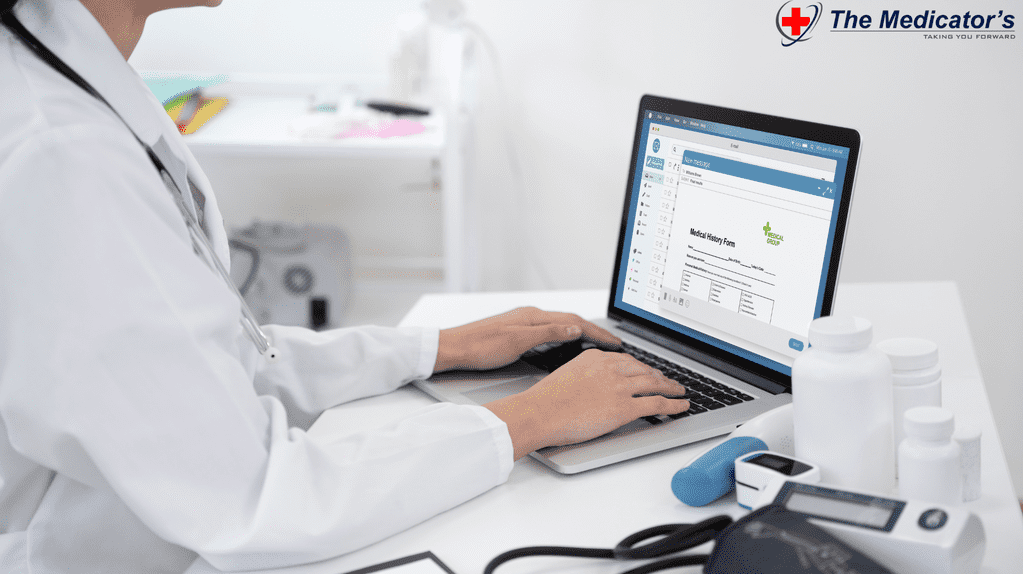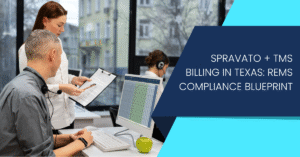Correct place of service (POS) codes are essential for proper medical billing as well as seamless revenue cycle management (RCM). They let payers know where care was provided, which affects both what gets approved and how much they’ll reimburse.
One of the most critical codes for home-based care is POS 12 — Patient’s Home. For home health visits and certain telehealth services in particular — when providers deliver care outside of traditional facilities — it is particularly important.
Appearing under the right POS can help prevent claim denials and increase cash flow while keeping your accounts receivable (AR) in balance.
1) What is POS 12?
According to the Centers for Medicare & Medicaid Services (CMS), POS 12 is described as follows:
- Patient’s Home — A place OTHER THAN a hospital or other facility, providing supporting services to the patient in his/her private residence.
- For lack of a better term, POS 12 would be used when a provider meets a patient in the patient’s home for services.
Some of the typical services billed POS 12 for practitioners include:
- Home health nursing visits.
- No-acute care visits for elderly or disabled patients.
- Physical therapy and rehab treatment at home.
- Some telehealth visits (where rules permit).
2) When to Report POS-12 in Medical Billing
Use POS 12 when:
- A credentialed professional travels to the patient’s home to treat him or her.
- Services are offered in the home and not in a facility/office.
- The patient is confined to home or would be unable to attend an outpatient clinic.
Home vs. office visits:
- POS-12: Patient Lives at Home — provider goes to patient.
- POS-11: Place of Service Patient’s office (the patient comes to the provider).
Special considerations:
Credentialed providers need to verify that they are authorized by payers to bill for home visits. Non-credentialed providers open themselves up to denials and potential loss of revenue.
3) POS-12 Reimbursement Rules
Reimbursement for POS 12 care (Home Health) may be very different from office or hospital based care.
- POS 12 vs POS 11: Home services are frequently reimbursed separately because of travel and home care requirements.
- POS 12 vs POS 22: Outpatient hospital visits adhere to facility-based payment rules, and POS 12 is for residential care.
- Medicare/Medicaid: demand such a stringent level of documentation and that provider be credentialed for home health billing.
Tip: Some commercial payers pay lower rates for home visits vs office visits while others may have parity — review these with payer contracts.
4) POS 12 vs POS 11 – Home vs Office Services
| Feature | POS 12 – Home | POS 11 – Office |
| Location | Patient’s private home | Provider’s office |
| Credentialing | Required by payers | Typically already covered |
| Reimbursement | Varies by payer; may be lower or require additional documentation | Often higher and simpler |
| Common Issues | Denials if provider not credentialed | Fewer compliance challenges |
Take home point: – Clinically, we use POS 12 only when the patient receives treatments at home. POS 11 (office) billed for home visits can be audited and the monies returned.
5) POS-12 Providers-Credentialing and Compliance
Home health services Requires Provider to be Credentialed Credentialing is key for home health providers.
- Providers billing POS-12 must be enrolled for many payers.
- If payments are not credentialled, then automatic denial happens.
- Providers must adhere to home health rules of individual payers.
Best practices:
- Maintain accurate enrollment records with payers.
- Check networks for home visits.
- Monitor track credentialing renewals to prevent billing disruptions.
6) POS-12 AR Management Strategies
The most common reasons for denial on POS 12 are:
- Provider not credentialed properly for home visit.
- Such documentation shall include a lack of medical need or patient address.
- POS 12 if a patient was seen at an office or a facility.
AR improvement tips:
- Check for eligibility: Check if the payer has home visit procedures prior to scheduling.
- Audit claims: Identify POS mistakes before you bill.
- Monitor denial patterns: Look for common payer problems and correct it in advance.
7) Telehealth and POS 12 Updates
CMS 2025 updates to include new telehealth rules for homes:
- Telehealth visits originating from the patient’s home continue to be billed with POS 12, although payers typically require modifier codes (e.g., 95) to designate telehealth.
- Hybrid care models — in which providers are blending home visits with virtual care — also rely on accurate documentation to avoid denials.
- Some payers are also extending telehealth reimbursement parity to homes until 2025.
- Action Step: Monitor payer bulletins for the most current telehealth POS 12 policy changes and remain compliant.
8) POS-12 Home Billing Keying Mistakes
- Billing POS 12 when Providers are not credentialed to do so.
- Filing claims without patient address confirmation.
- Confusing place of service codes for home visits with office E/M codes.
- Not including modifiers when billing telehealth.
- Between visit location change, not updating the EMR settings.
Prevention strategies:
- Staff training: Train the billers on home health rules.
- Technology: Implement claim scrubbers that alert for incorrect POS codes.
- Documentation audits: Verify EMR for home visit specifics.
9) POS-12 Best Practices for Success
- Streamline processes: POS selection is automated to prevent errors on a manual basis.
- Check credentialing: Ensure all the providers rendering home care are listed as contracted with payers.
- Verify eligibility: Ensure they are covered for a home or telehealth visit prior to scheduling.
- Leverage RCM technology: Auto scrubs, eligibility verification and denial tracking can help grow revenue while minimizing AR delays.
Conclusion
POS 12 – Patient’s Home For home health and telehealth billing this is crucial. Precise coding is the cornerstone of protecting revenue, avoiding denials and maintaining a seamless RCM process.
To stay profitable and compliant:
- Keep provider credentialing current.
- Check payer rules and eligibility before billing.
- Leverage automation and audits to minimize claims errors.
You can continue strengthening your home health billing and maximizing cash flow despite the changing landscape of telehealth rules in 2025 with the right approach! Visit The Medicators for more information about Medical Billing Services Across USA.
FAQs
Q1. What is medical billing POS 12 and when to use it?
POS 12 is for home care provided by a credentialed professional. Apply it when the patient is prescribed treatment in his private home.
Q2. What is unique about POS 12 payment rules as opposed to the billing of an office or hospital?
Home visits are frequently paid at a different rate and require different documentation than office (POS 11) or hospital (POS 22) service. Medicare and Medicaid demand evidence of medical necessity.
Q3. What are the POS code requirements for home health?
To bill POS 12, providers must be enrolled and approved by the payers. If not credentialed properly, it is doubtful claims will be paid.
Q4. What is POS 12 AR Management – How to do it well enough not to be denied?
Check for eligibility, audit POS claims and train staff on home health documentation requirements.
Q5. What are new telehealth POS 12 changes for 2025?
CMS is still using POS 12 for telehealth, although new rules also call for modifiers and updated documentation to account for hybrid care models.









